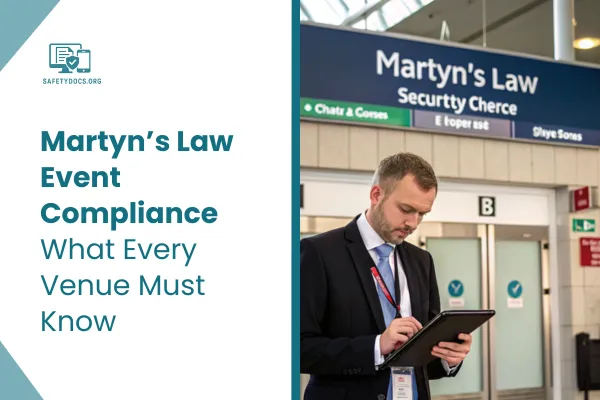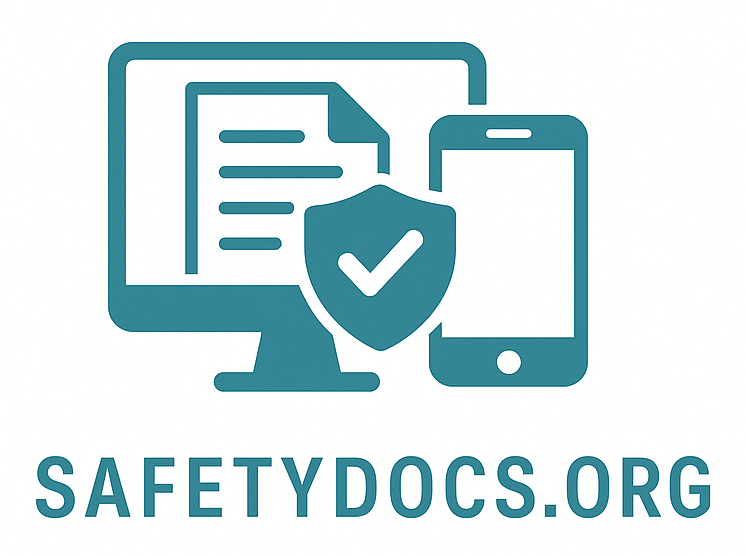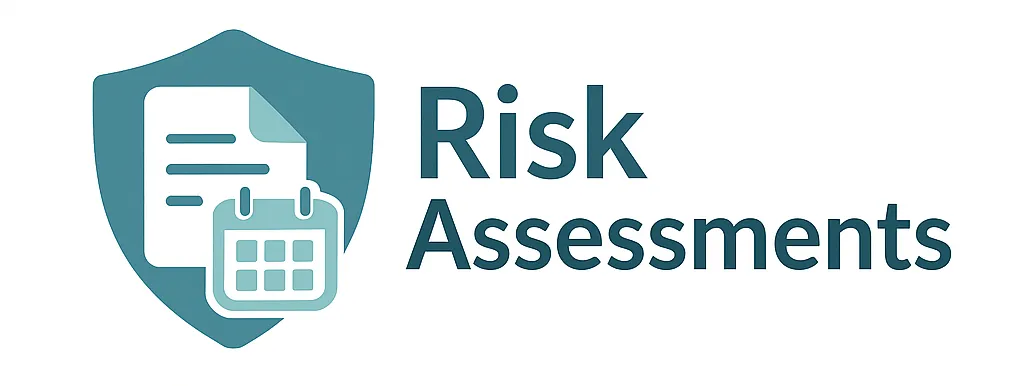
Martyn’s Law Event Compliance Explained Clearly
Martyn’s Law Event Compliance: What Every Venue Must Know
Martyn’s Law event compliance is a proposed UK legislation aimed at protecting the public from terror threats at venues and events. It’s named after Martyn Hett, one of the victims of the 2017 Manchester Arena attack. This law brings new safety responsibilities for venue owners, event organisers, and staff across the country.
The proposal is a direct response to serious security failings revealed in the Manchester Arena Inquiry. These failings exposed how many public venues lack proper safety checks, trained personnel, and emergency planning. Martyn’s Law aims to change that by making public safety a legal responsibility, not a choice.
Why Martyn’s Law Event Compliance Is Necessary
Rising Threats in Public Spaces
Terror attacks on crowds are designed to create panic and disruption. With large gatherings now common again, venues are vulnerable. Martyn’s Law event compliance helps prevent tragic outcomes by ensuring everyone involved in running an event knows what to do during a threat.
A National Duty of Care
When people attend a concert, festival, or sports match, they assume they’re safe. Martyn’s Law ensures that assumption has a foundation. It introduces consistency across the country, so every venue is held to the same safety expectations.
Who Must Comply With Martyn’s Law
Martyn’s Law is designed to cover both permanent and temporary venues that host a significant number of people. These include:
Concert halls and stadiums
Nightclubs and theatres
Shopping centres and cinemas
Community centres and festivals
Churches and other large gatherings
If your venue holds more than 100 people, you will likely fall into one of the law’s compliance tiers. Organisers of outdoor events or pop-up festivals must also prepare to meet the law’s requirements.
What Martyn’s Law Will Require
The law introduces two levels of compliance based on venue capacity:
1. Standard Tier (100 to 799 capacity)
Conduct a basic risk assessment for terrorism
Provide basic counter-terrorism awareness training for staff.
Create and communicate a simple emergency action plan.s
2. Enhanced Tier (800+ capacity)
Conduct detailed risk and threat assessments
Implement clear security procedures and physical measures.
Assign specific roles to team members for threat response.
Train staff with realistic simulations and role-playing scenarios
Continuously update and improve plans based on new risks.
Even if your event falls under the standard tier, you must demonstrate preparedness, not just intent.
Common Challenges Venues Might Face
Cost of Compliance
Some venue operators worry about the cost of meeting Martyn’s Law requirements. Risk assessments, new security equipment, and training all require investment. Smaller venues, especially in the arts or non-profit sectors, may feel the pressure.
However, the government has stressed that measures will be proportionate. Support may become available to assist smaller organisations in meeting their obligations without sacrificing safety.
Staff Readiness
Many venues use temporary staff, volunteers, or third-party teams. Ensuring everyone gets the same quality of training can be challenging. Repetition, clear instructions, and regular reviews help reduce this risk.
Staying Updated
Since Martyn’s Law is still being finalised, the rules might shift slightly. Staying connected to government updates, professional networks, or industry bodies is vital for accurate and timely adjustments.
How to Prepare for Martyn’s Law Event Compliance
1. Start Risk Assessments Early
Walk through your venue and identify risks. Think about how crowds move, where people gather, and where visibility is limited. Ask: “If something happened here, how would we respond?” Partner with local experts for a more detailed review.
2. Train Staff with Real Scenarios
The simple theory isn’t enough. Use role-playing to simulate real threats. Teach staff to stay calm, identify suspicious items, and know the evacuation process. Rehearse until they can act under pressure.
3. Strengthen Your Plans
Write emergency plans that are easy to understand. Use clear diagrams, labelled exits, and step-by-step instructions. Keep a printed version in accessible areas of the venue in case of power failure.
4. Involve the Community
Public support makes compliance smoother. Share your safety efforts on social media, post signage at your venue, and encourage feedback from attendees. Community awareness helps prevent threats before they happen.
5. Conduct Regular Reviews
What worked last year may not work today. Update your risk assessments regularly. Review incident reports, check equipment, and revise staff lists. Schedule surprise drills to test real-world readiness.
Real-World Lessons From Past Incidents
Manchester Arena
The attack exposed delays in decision-making and a lack of situational awareness. A simple “see something, say something” culture could have prevented the tragedy. Martyn’s Law event compliance is a direct attempt to correct those failings.
London Bridge Attack
Quick-thinking staff and bystanders reduced the death toll. The event shows that preparedness doesn’t always rely on security professionals—it also comes from community alertness and basic knowledge.
What Industry Professionals Are Saying
“Martyn’s Law will reshape how we run events. It’s not just about ticking boxes—it’s about building real confidence in public safety.”
— UK Event Safety Consultant
“We’re already adapting our policies ahead of time. The public expects us to take safety seriously.”
— Theatre Manager, London
Public polling shows most people believe venues should be held responsible for safety. Attendees often say they feel more secure when they see staff acting with confidence and control.
Benefits of Early Compliance
Legal Protection: Being ready now helps you avoid costly penalties later.
Public Confidence: Visitors are more likely to attend events at venues that are visibly secure.
Stronger Reputation: Compliance shows leadership and builds trust in your brand.
Internal Safety Culture: Teams that know what to do create a safer environment for everyone.
Martyn’s Law event compliance can also be a competitive advantage. If customers must choose between two similar venues, the one with visible, confident safety measures may win their loyalty.
Martyn’s Law Is Not Optional
Once enacted, Martyn’s Law will become a binding legal requirement. Venues that ignore it may face fines, reputational damage, or worse—an unprepared team during a crisis. Safety isn’t a marketing tactic; it’s a moral obligation. It shows you value human life over profit or convenience.
Why Public Awareness Matters in Safety Planning
Even the most prepared venue can benefit from public cooperation. Educating attendees on what to expect in an emergency helps reduce panic and confusion. Clear signage, announcements, and friendly reminders can turn the public into a supportive part of your safety strategy.
People are more likely to follow instructions if they feel informed, not surprised. Building awareness creates a culture where safety is seen as a shared responsibility, not just something for staff to handle alone.
Technology's Role in Safer Events
Modern tools can support safety planning without being intrusive. Digital check-ins, surveillance systems, and crowd-monitoring software all provide valuable data. They help security teams spot problems early and respond faster if something goes wrong.
Simple solutions like text alerts or pre-event safety videos can also prepare guests before they arrive. Using the right tech makes compliance easier and response times quicker, without overwhelming your team.
FAQs
1. What is the main goal of the new safety law for venues?
The main goal is to improve public safety by requiring venues to assess risks and prepare for possible terror threats.
2. Who needs to follow these new safety rules?
Venues and event spaces with a capacity of 100 or more people will likely be required to comply with the proposed safety rules.
3. Are small venues expected to meet the same requirements?
No, smaller venues will follow simpler safety steps, while larger venues will need to take more advanced measures.
4. What happens if a venue does not meet the requirements?
Venues may face penalties, fines, or reputational damage if they fail to follow the new legal obligations.
5. How can venues start preparing now?
They should begin by doing risk assessments, training staff, and writing clear emergency action plans.
Conclusion
Martyn’s Law event compliance isn’t just about rules—it’s about responsibility. Whether you’re managing a festival, theatre, sports stadium, or community centre, taking steps today ensures a safer tomorrow. The safety of every attendee depends on the actions taken behind the scenes. Get ready, stay informed, and protect your venue from preventable harm.

